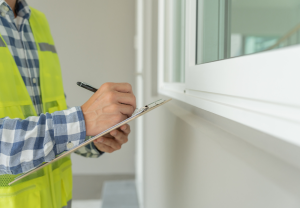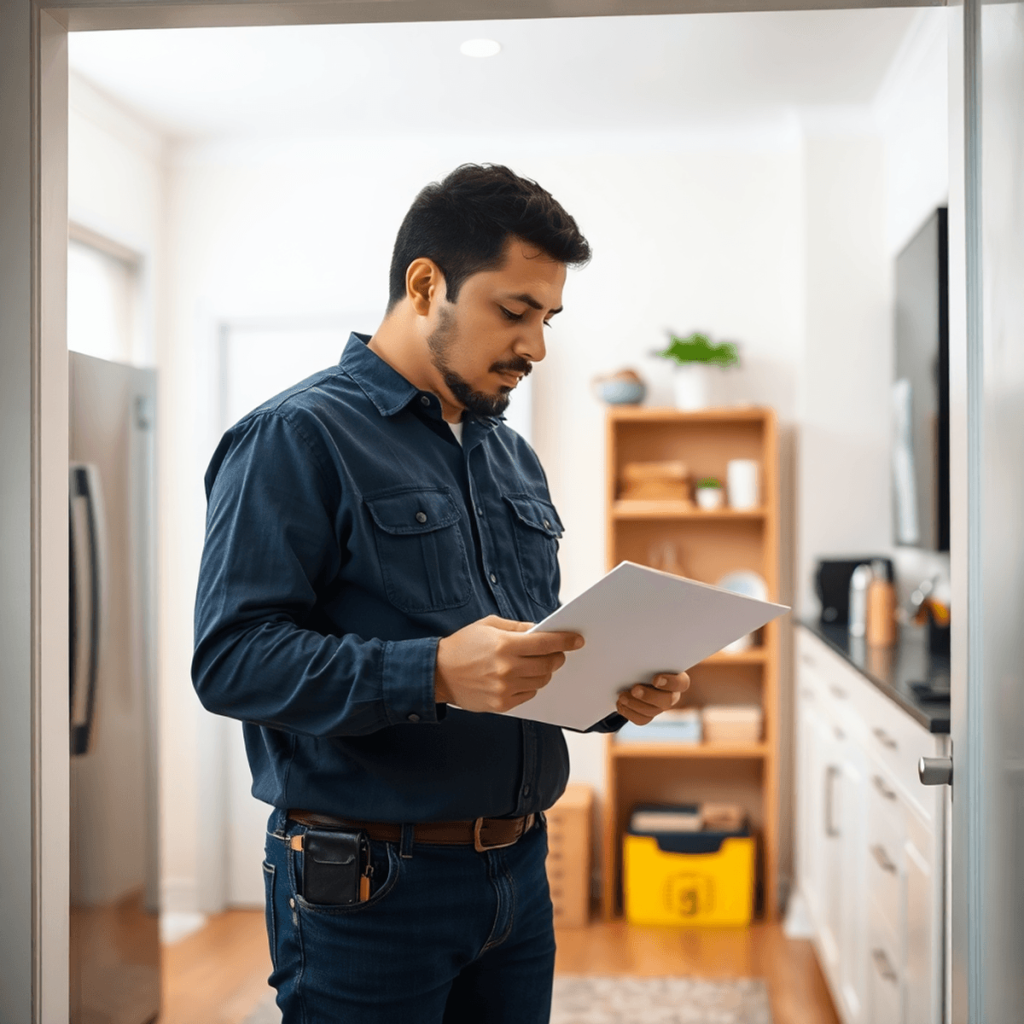Introduction
In the world of home buying, a pre-purchase property inspection is an invaluable step that often gets overlooked. This critical process can make or break your real estate investment by uncovering hidden issues before they become costly problems. Without it, you might find yourself facing unexpected repairs and expenses just after moving into your new home.
Here are 5 reasons you need a pre-purchase property inspection:
Identification of issues that could sway your buying decision
Prevention of future expenses through early problem detection
Peace of mind knowing the true condition of the property
Detection of safety hazards that could affect you and your family
Negotiation leverage to secure better terms or pricing
These factors can significantly impact your experience as a homeowner. Understanding these reasons helps ensure that your investment is sound and aligns with your expectations.
For instance, a professional home inspection can unlock value by identifying potential issues early on, which can save you from future expenses. This is just one of the many benefits of professional home inspections.
Moreover, if you’re considering purchasing a commercial property, it’s crucial to understand that the same principles apply. A thorough commercial property inspection can reveal hidden problems that may not be immediately apparent.
In addition to general inspections, specific areas such as the air conditioning system also require specialised attention. For example, an air conditioner inspection in Adelaide can uncover issues that might lead to costly repairs if left unchecked.
Ultimately, whether you’re buying a residential or commercial property, ensuring that you have a comprehensive understanding of the property’s condition through inspections is key to making a sound investment.
1. Identifying Potential Problems
When you’re thinking about buying a new property, it’s really important to know about any potential problems that might be hidden from view. That’s where a pre-purchase property inspection comes in handy. It’s a crucial tool that helps us find common but significant issues like structural defects, plumbing problems, and electrical hazards. These inspections give us a detailed look at the property’s condition, revealing insights that aren’t immediately obvious.
Common Problems Found During Inspections
Here are some of the most common issues that inspections often uncover:
Structural Defects: These can include anything from cracks in the foundation to sagging roofs. Such problems can weaken the home’s structure and lead to expensive repairs if not fixed quickly.
Plumbing Issues: Inspections can reveal hidden leaks, outdated piping systems, or malfunctioning water heaters. Ignoring these problems can result in water damage or higher utility bills.
Electrical Hazards: Faulty wiring, old electrical panels, or overloaded circuits are serious safety risks. Identifying them early on ensures they can be fixed before causing harm or inconvenience.
Why Being Aware Matters
Knowing about these potential problems before making a buying decision puts you in control as a buyer. It gives you a complete understanding of what you’re getting into and helps you avoid unexpected surprises after closing the deal. This awareness is crucial for making an informed investment decision, ensuring that your future home meets your expectations and safety standards.
Real-Life Examples
Here are some real-life examples that show how important it is to identify issues upfront:
A prospective homeowner discovered extensive termite damage through an inspection. This finding allowed them to negotiate repairs with the seller before finalising their purchase. In such cases, a pest inspection could have been instrumental in identifying such issues early on.
Another case involved identifying a significant roof leak that was not visible during initial viewings; addressing this early saved the buyer from substantial future repair costs. Here, a comprehensive building and pest inspection would have provided valuable insights into both structural and pest-related issues.
These examples highlight how identifying issues upfront can greatly influence your buying decision and potentially save you thousands of dollars in unexpected repairs. It’s essential to spot these problems early on to protect your investment and ensure peace of mind as you become a homeowner.
2. Preventing Future Expenses
A pre-purchase property inspection is a crucial step in protecting your financial investment. By identifying potential problems early on, homebuyers can save a significant amount of money through timely repairs and proactive maintenance.
Cost Savings Through Early Detection
Finding issues right away stops them from becoming bigger problems that would need expensive fixes. For example, if an inspection reveals a small roof leak, homeowners can fix it before it causes major water damage. This simple action can save thousands of dollars in future repairs.
Timely Repairs That Prevent Larger Expenses
Think about situations where prompt actions have stopped bigger financial burdens:
Plumbing Issues: A small drip might seem harmless, but over time, it can lead to mould growth and structural damage. An inspection that highlights this issue prompts immediate action, potentially avoiding expensive dehumidification and structural repairs. It’s important to understand how homeowners insurance handles plumbing problems, as this can also impact your financial planning.
Electrical Hazards: Outdated or faulty wiring uncovered during an inspection not only poses a safety risk but also contributes to inefficient energy use. Addressing these early ensures safety and reduces utility bills.
Foundation Cracks: Minor foundation cracks caught early can be sealed before they widen and compromise the structural integrity of a house. Neglecting these could result in significant repair costs down the line.
In each of these cases, acting quickly not only fixes current problems but also reduces future maintenance needs. This proactive approach leads to long-term savings by keeping the property in good condition and preventing its value from decreasing due to neglect.
By making inspections a part of your buying strategy, you gain knowledge that helps you make informed decisions and manage your finances wisely.
3. Peace of Mind
Understanding the condition of a property before making a purchase is crucial for any prospective homeowner. A pre-purchase property inspection offers psychological benefits that extend beyond the tangible aspects of buying a home. By knowing exactly what you’re getting into, you can experience a sense of comfort and assurance, enabling you to make informed decisions with confidence.
Psychological Benefits
Reduced Anxiety: Knowing the state of a potential home alleviates the stress associated with unforeseen problems. This clarity helps reduce anxiety and allows you to focus on other important aspects of your life.
Empowerment: Armed with detailed information from an inspection report, you feel empowered. This empowerment stems from having a clear understanding of any issues that may need addressing, which in turn supports educated choices about your investment.
Educated Choices
Inspections provide critical insights that influence your decision-making process:
Valuation Clarity: Detailed inspections reveal aspects that affect the property’s value, such as structural integrity or potential renovation needs. With this knowledge, you can assess if the asking price aligns with the property’s actual worth.
Future Planning: By identifying potential future expenses or necessary upgrades, inspections guide your planning and budgeting processes. This foresight allows you to prioritise renovations and repairs within your financial means.
The peace of mind gained from understanding a property’s true condition cannot be understated. It builds buyer confidence, ensuring you proceed with assurance in what might be one of life’s most significant purchases.
Furthermore, understanding the implications of certain decisions can also help in managing stress levels during this significant transition. For instance, being aware of behavioural health crisis care guidelines can be beneficial if unexpected emotional challenges arise during the home buying process.
Lastly, it’s essential to consider the long-term financial implications of your property purchase, including potential capital gains tax when selling the property in the future. Familiarising yourself with home sale capital gains tax exclusion can provide valuable insights that aid in planning your financial future effectively.
4. Safety Hazard Identification
Understanding the potential safety risks in a property is crucial for any prospective homeowner. A pre-purchase property inspection can reveal a variety of hazards that might not be immediately apparent to the untrained eye.
Types of Safety Hazards Discovered:
Faulty Wiring: One of the most common safety risks uncovered during inspections. Faulty wiring can lead to electrical fires, which pose a significant threat to both life and property. Inspectors look for outdated electrical panels, exposed wires, or improper installations that could cause serious problems down the line.
Structural Instability: Structural defects such as cracks in the foundation, sagging roofs, or misaligned doors and windows indicate potential instability. These issues might result from poor construction practices or natural wear over time, and if left unchecked, they could lead to catastrophic failures.
Plumbing Leaks and Mould: Hidden leaks in plumbing systems often contribute to mould growth, which can adversely affect indoor air quality and pose health risks to inhabitants. Inspections often uncover such leaks, allowing homeowners to address them before they escalate.
Hazardous Materials: Asbestos and lead-based paint are hazardous materials frequently found in older homes. Their presence poses long-term health risks if not properly managed or removed.
Impact on Homeowners and Families:
The discovery of these safety hazards has profound implications for homeowners and their families. Safety issues like faulty wiring or structural instability not only endanger physical wellbeing but also impose emotional stress due to the potential threats they pose.
Living in a home with unresolved safety hazards can lead to anxiety over potential accidents or costly repairs. By identifying these problems through a thorough inspection, buyers can take proactive measures to ensure their home environment is safe and secure for everyone involved.
Through addressing these concerns early on, homeowners are better equipped to maintain a safe living space while avoiding unexpected dangers and expenses associated with undetected hazards.
5. Negotiation Leverage
Negotiation strategies are an essential part of the home-buying process, and a pre-purchase property inspection report serves as a powerful tool in this regard. This comprehensive document provides you with detailed insights into the property’s condition, which can be used to gain an advantage during negotiations.
Inspection reports highlight any issues or defects within the property, equipping you with evidence to discuss potential adjustments with the seller. For example, if the inspection uncovers significant problems such as structural damage or outdated electrical systems, you may use this information to negotiate a purchase price reduction. Sellers are often more willing to lower the price to compensate for these issues rather than risk losing the sale entirely.
Beyond price reductions, inspection findings can lead to seller concessions. This could involve the seller agreeing to cover certain repair costs before closing. Imagine discovering through your inspection that the heating and air conditioning system needs replacement; this gives you leverage to request that the seller either fix it or provide a credit towards its repair upon purchase.
Examples of Negotiation Outcomes
Price Reductions: A buyer discovers extensive roof damage during an inspection. Using this information, they successfully negotiate a $10,000 reduction in the purchase price.
Repair Requests: An inspection reveals plumbing issues that require immediate attention. The buyer negotiates with the seller to have all plumbing repairs completed before finalising the deal.
Seller Credits: Electrical hazards are identified in a home inspection report. The buyer secures a $5,000 credit from the seller at closing, intended for updating and repairing the electrical system.
Leveraging an inspection report not only empowers you in negotiations but also ensures that any financial implications of discovered issues are addressed upfront, ultimately leading to a more secure investment decision.
Conclusion
Getting a pre-purchase property inspection is an important step in the home buying process. These inspections reveal important information about a property, giving buyers the knowledge they need to make smart purchases.
Skipping this important step can lead to unexpected problems later on, which could have been avoided. The significance of inspections cannot be overstated, as they help identify hidden issues, prevent expensive future repairs, ensure safety, and strengthen negotiation power.
Prospective buyers are strongly encouraged to make these inspections a regular part of their journey. By learning about the 5 Reasons You Need a Pre-Purchase Property Inspection, you equip yourself with knowledge and confidence, making sure that your investment is both secure and sound.
Take charge of your home-buying experience by including thorough inspections in your plan. It’s not just about buying a house; it’s about ensuring your peace of mind for many years ahead.
Frequently Asked Questions
A pre-purchase property inspection is a thorough evaluation of a property’s condition conducted before finalising a purchase. It identifies potential issues such as structural defects, plumbing problems, and electrical hazards that could impact the buyer’s decision.
Early identification of problems during an inspection can prevent larger expenses in the future. For example, timely repairs for issues like roof leaks can save homeowners from costly damages down the line.
Common issues discovered during inspections include structural defects, plumbing issues, and electrical hazards. Being aware of these potential problems before purchasing a home is crucial for informed decision-making.
Knowing the condition of a property through an inspection empowers buyers to make educated choices, boosting their confidence in the home-buying process and ensuring they understand the property’s value.
Inspections can reveal various safety hazards such as faulty wiring and structural instability. Identifying these risks is essential for protecting homeowners and their families from potential dangers.
An inspection report can serve as leverage in negotiations by highlighting necessary repairs or issues that justify a purchase price reduction or seller concessions. Buyers can use findings from the report to request repairs or negotiate better terms.
Subscribe To Our Newsletter
Get updates and learn from the best
More To Explore

Why Every Homebuyer Should Invest in a Residential Building Inspection
Introduction Investing in a residential building inspection is an essential step for any homebuyer. This critical evaluation serves as your safeguard, providing a comprehensive understanding of the property’s condition before making a financial commitment. Why are these inspections so important? They reveal the true state of a home, uncovering potential issues that could be costly

The Ultimate Guide to Pre-Purchase Building Inspections
Introduction Navigating the complex world of property investment can be challenging, but there’s one crucial step that can protect you from potential pitfalls: the pre-purchase building inspection. This thorough examination of a property before you buy it is designed to uncover any hidden problems or defects that could end up costing you a fortune in


